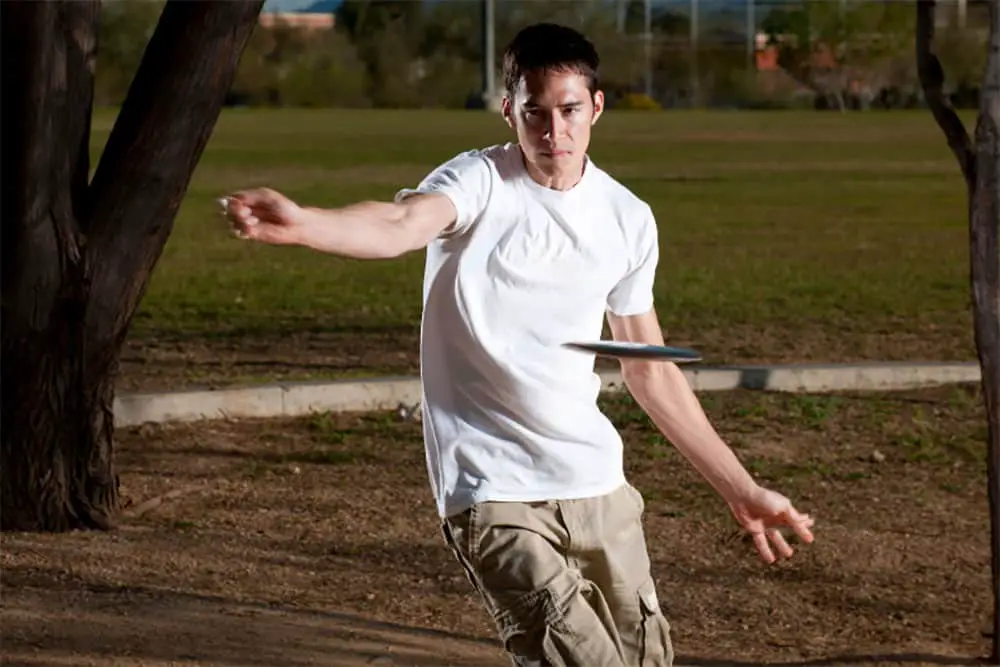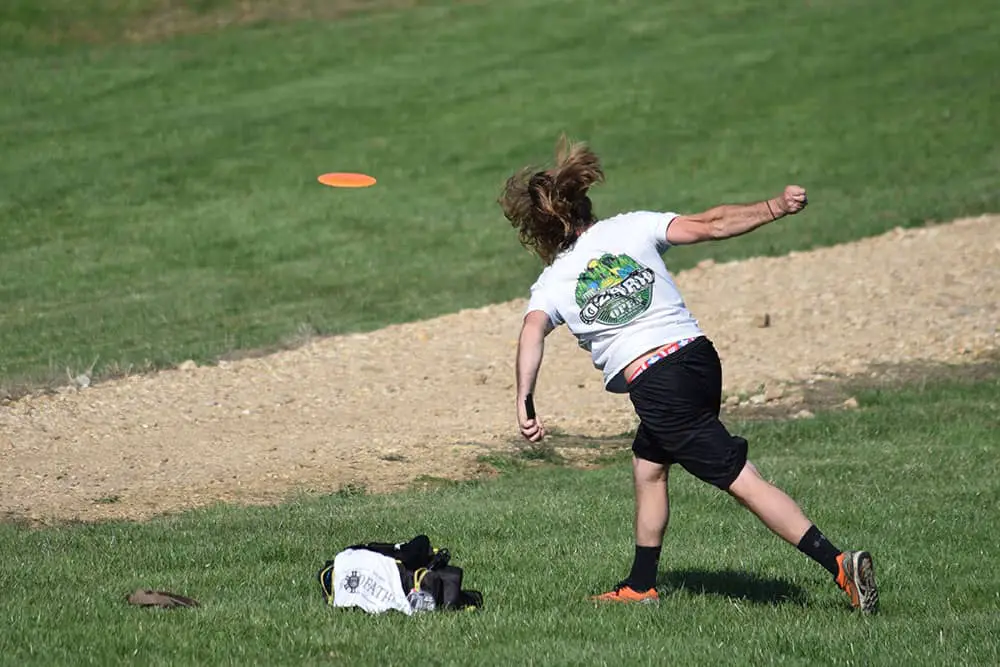Ask any Disc Golfer what aspect of their game they would most like to improve on the most and we bet they would say to drive further and straighter. It can be so frustrating to whiff a drive when you need your disc to travel further on a straight line.
But when it comes to throwing a disc golf driver straight, disc choice and technique are as important as each other. So let’s take a look at how to choose the right disc and how to improve on your technique so you can drive straighter than ever.

Choosing The Right Disc
There are so many discs out there to choose from, and it can be confusing to know which disc is right for you.
Many people purchase discs that are not up to the task, and this is one of the biggest mistakes you can make as a newbie Disc Golfer. For example, an overstable disc can really affect achieving accurate directions.
Starting with a disc that is lighter, slower, and less stable may seem counterintuitive but you’ll soon notice the benefits, and will set off better, straighter shots.
You may consider a putter that, while sacrificing on distance, ensures accuracy each and every time. Plus, with more practice you can upgrade your putter for midrange discs and drivers.
Granted, you may not be the biggest threat to the competition at first, but using these discs ensures you’ll always know where the disc will land.
Also look for discs that have a speed between 6-7 and a stability of -1 to -3, and when it comes to brands you can’t go wrong with discs from Innova and Discraft.
Technique
Tensing up is not your friend when throwing a disc golf driver. It’s hard when the pressure is on, but being as relaxed as you possibly can helps you throw further and with better directions.
Also, tensing up leads to throwing your golf driver at a shorter distance because your disc will leave your hands slower. How tense you are when pulling the disc through your chest will determine the distance you achieve and affect your aim all together.
When practicing accuracy, grip is also important. Your grip shouldn’t be so tight that your knuckles turn white but you don’t want your disc to easily slip out of your grip either. Make sure your wrist is open enough so that you aren’t choking the disc.

It can be tricky to find the right grip, and to find the balance between holding the disc too hard or too gently. But ask a fellow player to help you with this. Ask them to pull at your disc while you are gripping to decide if you need to tighten your grip or loosen if.
If your friend has to really pull at for the disc to come loose then you’ve achieved the right grip. This exercise also demonstrates how an early or late release can have a negative impact on your Disc Golf drives. When the grip is true and the release is on time, the disc will travel further and straighter.
It’s also easy to get in your head and compare yourself to other players and this can have a negative effect on your game. If you’ve seen professionals run up to the tee before driving their discs, you may think you have to emulate them but this is not the case.
Trying to imitate a professional is not recommended, and you’re not expected to play to the same level they are. They were once in your shoes too and figuring out their techniques, just like you.
Running-up to the tee also isn’t recommended… at first anyway. It can actually make you less likely to hit your target, so before you sprint up to the tee, try shooting standing still or taking slow steps to the tee box when you throw your driver.
It may be helpful to take a scientific approach. The average human can apparently run between 10-15 miles per hour. This may seem like a lot of pace when trying to throw a disc golf driver.
But you also don’t throw straight forward when throwing a disc golf driver, and with the x-step technique a thrower can only reach up to 7-8 miles per hour. Also, when releasing the disc you’ll have to plant your leg to throw, pivot, and then turn your body.
So only 2 to 3 miles per hour is gained from your running throw. That isn’t a lot, and it isn’t enough to really help improve your accuracy and the distance you can achieve.
Lastly, take a look at any habits you’ve developed when playing and check if there are any areas where you are overcompensating. Sometimes lackluster and inaccurate driver throws happen when you’re trying to compensate for an issue that you need to correct in practice.
Having some footage to look at can be a big help for analysing your game. Ask a friend to film you next time you play and then watch the footage back so you can learn how to grow and improve. But getting the opinion of your coach or fellow players also helps.
Final Thoughts
Choosing the right equipment, practicing new techniques and analysing your existing techniques can be helpful in throwing a disc golf driver straight. But it’s also worth considering what you want to achieve.
Do you want to impress with long-distance throws or do you want to consistently achieve straight, accurate throws? If accuracy is your main concern, it’s worth going back to the drawing board. Sacrificing accuracy for distance is a common problem but one that can be overcome.
It’s also important to trust your instincts. This is where being analytical comes in. Take a look at your game and work on the area of your game that you feel will lead to more effective use of your driver.
Yes, driving far may be a sight to behold but if it’s not followed by accuracy it can feel like a hollow achievement.